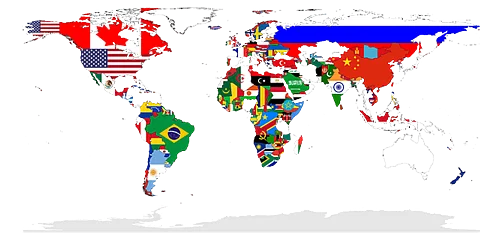
- Home
- न्यूजग्राम
- India
- World
- Politics
- Entertainment
- Culture
- Lifestyle
- Economy
- Sports
- Sp. Coverage
- Misc.
- NewsGram Exclusive
- Jobs / Internships

JAYA CHOUDHARY
Today, there are nearly 196 countries in the world, and almost none of them have purple on their national flags. Purple has never been used to depict a kingdom, civilization, or empire in history. Although it is a really common color nowadays, what exactly was the problem with purple? What made no nation will use it in their flag? The answer is actually very simple.
Purple was way too expensive. No countries have purple on their flags because up until the 1800s purple was worth more than its weight in gold. For centuries, the color purple has been synonymous with royalty, power, and prosperity. In fact, Queen Elizabeth was the first to ban purple from being worn by anyone other than close members of the royal family.
Purple's gentry status stems from the uniqueness and cost of the dye originally used to produce it. The purple dye was originally sourced from the Phoenician trading city of Tyre, which is now located in modern-day Lebanon. Fabric traders got the dye from a small sea snail that could only be found in the Mediterranean area of Tyre. More than 10,000 snails were used to make the dye, which took a lot of time and effort.
The traders of fabrics aquired the dye from a small sea snail that was only found in the Tyre region of the Mediterranean. The dye was made with a lot of effort and it took over 10,000 snails to make only one gram of Tyrean purple. Since only wealthy rulers could afford to buy and wear the color, it became associated with Rome's, Egypt's, and Persia's imperial classes.
The dye was made with a lot of effort and it took over 10,000 snails to make only one gram of Tyrean purple. Pixabay
Purple was also associated with spirituality and holiness as a result of the ancient emperors, rulers, and queens who wore it being thought of as gods or god's descendants. However, even for royalty, the dye proved to be prohibitively costly at times. Since a shawl made of Tyrian purple cost three times its weight in gold, a third-century Roman emperor forbade his wife from buying one. A single pound of dye cost three pounds of gold, the equivalent of $56,000 in today's money. Since purple was so costly, no one, not even the wealthiest countries, could afford to have it on their flag.
Around a century and a half ago, colour became available to the lower classes. In 1856, when attempting to synthesize quinine, an anti-malaria drug, an 18-year-old English chemist William Henry Perkin inadvertently produced a synthetic purple compound. He realized the substance could be used to dye fabrics. He invented the dye, processed it, and became extremely wealthy. Purple dye was then mass-produced, making it available to almost all. Thereafter purple was no longer valued by the elite, and the status symbol faded away, but country flags remained the same. Apparently, only two new national flags of Dominica and Nicaragua have purple on them.
